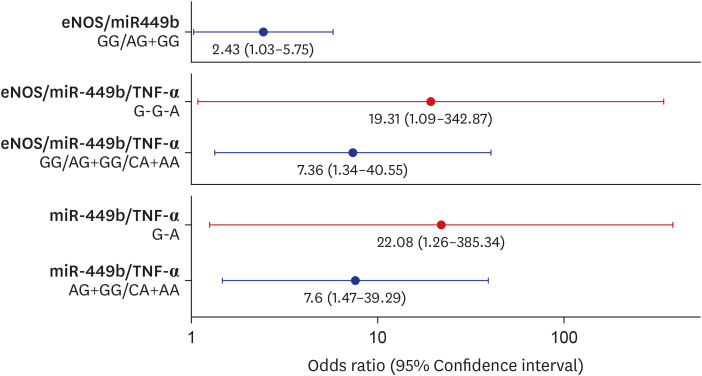1. Larsen EC, Christiansen OB, Kolte AM, Macklon N. New insights into mechanisms behind miscarriage. BMC Med. 2013; 11(1):154. PMID:
23803387.
2. Ford HB, Schust DJ. Recurrent pregnancy loss: etiology, diagnosis, and therapy. Rev Obstet Gynecol. 2009; 2(2):76–83. PMID:
19609401.
3. García-Enguídanos A, Calle ME, Valero J, Luna S, Domínguez-Rojas V. Risk factors in miscarriage: a review. Eur J Obstet Gynecol Reprod Biol. 2002; 102(2):111–119. PMID:
11950476.
4. Definitions of infertility and recurrent pregnancy loss. Fertil Steril. 2008; 90(5):Suppl. S60. PMID:
19007647.
5. Branch DW, Gibson M, Silver RM. Clinical practice. Recurrent miscarriage. N Engl J Med. 2010; 363(18):1740–1747. PMID:
20979474.
6. Mark HF. Cytogenetics of reproductive wastage: from conception to birth. Medical Cytogenetics. New York, NY, USA: Marcel Dekker;2000. p. 213–246.
7. Khonina NA, Broitman EV, Shevela EY, Pasman NM, Chernykh ER. Mixed lymphocyte reaction blocking factors (MLR-Bf) as potential biomarker for indication and efficacy of paternal lymphocyte immunization in recurrent spontaneous abortion. Arch Gynecol Obstet. 2013; 288(4):933–937. PMID:
23558562.
8. Murugappan G, Shahine L, Lathi RB. Antimullerian hormone is a predictor of live birth in patients with recurrent pregnancy loss. Fertil Res Pract. 2019; 5(1):2. PMID:
30923623.
9. Kim MS, Gu BH, Song S, Choi BC, Cha DH, Baek KH. ITI-H4, as a biomarker in the serum of recurrent pregnancy loss (RPL) patients. Mol Biosyst. 2011; 7(5):1430–1440. PMID:
21331437.
10. Bahia W, Soltani I, Abidi A, Haddad A, Ferchichi S, Menif S, et al. Identification of genes and miRNA associated with idiopathic recurrent pregnancy loss: an exploratory data mining study. BMC Med Genomics. 2020; 13(1):75. PMID:
32487076.
11. Nagirnaja L, Palta P, Kasak L, Rull K, Christiansen OB, Nielsen HS, et al. Structural genomic variation as risk factor for idiopathic recurrent miscarriage. Hum Mutat. 2014; 35(8):972–982. PMID:
24827138.
12. O’Toole AS, Miller S, Haines N, Zink MC, Serra MJ. Comprehensive thermodynamic analysis of 3′ double-nucleotide overhangs neighboring Watson-Crick terminal base pairs. Nucleic Acids Res. 2006; 34(11):3338–3344. PMID:
16820533.
13. Rah H, Chung KW, Ko KH, Kim ES, Kim JO, Sakong JH, et al. miR-27a and miR-449b polymorphisms associated with a risk of idiopathic recurrent pregnancy loss. PLoS One. 2017; 12(5):e0177160. PMID:
28489914.
14. Rah H, Jeon YJ, Lee BE, Choi DH, Yoon TK, Lee WS, et al. Association of kinase insert domain-containing receptor (KDR) gene polymorphisms with idiopathic recurrent spontaneous abortion in Korean women. Fertil Steril. 2013; 99(3):753–760.e8. PMID:
23158831.
15. Jang HG, Choi Y, Kim JO, Jeon YJ, Rah H, Cho SH, et al. Polymorphisms in tumor necrosis factor-alpha (-863C>A, -857C>T and +488G>A) are associated with idiopathic recurrent pregnancy loss in Korean women. Hum Immunol. 2016; 77(6):506–511. PMID:
27083536.
16. Shin SJ, Lee HH, Cha SH, Kim JH, Shim SH, Choi DH, et al. Endothelial nitric oxide synthase gene polymorphisms (-786T>C, 4a4b, 894G>T) and haplotypes in Korean patients with recurrent spontaneous abortion. Eur J Obstet Gynecol Reprod Biol. 2010; 152(1):64–67. PMID:
20728041.
17. Müller A, Wagner J, Hodžić A, Maver A, Škrlec I, Heffer M, et al. Genetic variation in leptin and leptin receptor genes is a risk factor for idiopathic recurrent spontaneous abortion. Croat Med J. 2016; 57(6):566–571. PMID:
28051281.
18. Bamshad M. Genetic influences on health: does race matter? JAMA. 2005; 294(8):937–946. PMID:
16118384.
19. Di Prima FA, Valenti O, Hyseni E, Giorgio E, Faraci M, Renda E, et al. Antiphospholipid Syndrome during pregnancy: the state of the art. J Prenat Med. 2011; 5(2):41–53. PMID:
22439075.
20. Gaiday AN, Tussupkaliyev AB, Bermagambetova SK, Zhumagulova SS, Sarsembayeva LK, Dossimbetova MB, et al. Effect of homocysteine on pregnancy: a systematic review. Chem Biol Interact. 2018; 293:70–76. PMID:
30053452.
21. Asanidze E, Kristesashvili J, Andguladze S. Correlation between levels of homocysteine, anti-mullerian hormone and insulin resistance in PCOS patients with recurrent miscarriage. Georgian Med News. 2019; (290):25–29.
22. Rull K, Nagirnaja L, Laan M. Genetics of recurrent miscarriage: challenges, current knowledge, future directions. Front Genet. 2012; 3:34. PMID:
22457663.
23. Amin-Beidokhti M, Mirfakhraie R, Zare-Karizi S, Karamoddin F. The role of parental microRNA alleles in recurrent pregnancy loss: an association study. Reprod Biomed Online. 2017; 34(3):325–330. PMID:
28012790.
24. Su X, Hu Y, Li Y, Cao JL, Wang XQ, Ma X, et al. The polymorphism of rs6505162 in the MIR423 coding region and recurrent pregnancy loss. Reproduction. 2015; 150(1):65–76. PMID:
25926693.
25. Hu Y, Liu CM, Qi L, He TZ, Shi-Guo L, Hao CJ, et al. Two common SNPs in pri-miR-125a alter the mature miRNA expression and associate with recurrent pregnancy loss in a Han-Chinese population. RNA Biol. 2011; 8(5):861–872. PMID:
21788734.
26. Jeon YJ, Choi YS, Rah H, Kim SY, Choi DH, Cha SH, et al. Association study of microRNA polymorphisms with risk of idiopathic recurrent spontaneous abortion in Korean women. Gene. 2012; 494(2):168–173. PMID:
22222140.
27. Wang M, Gao Y, Qu P, Qing S, Qiao F, Zhang Y, et al. Sperm-borne miR-449b influences cleavage, epigenetic reprogramming and apoptosis of SCNT embryos in bovine. Sci Rep. 2017; 7(1):13403. PMID:
29042680.
28. Teruel-Montoya R, Rosendaal FR, Martínez C. MicroRNAs in hemostasis. J Thromb Haemost. 2015; 13(2):170–181. PMID:
25400249.
29. Knöfler M, Mösl B, Bauer S, Griesinger G, Husslein P. TNF-α/TNFRI in primary and immortalized first trimester cytotrophoblasts. Placenta. 2000; 21(5-6):525–535. PMID:
10940203.









 PDF
PDF Citation
Citation Print
Print




 XML Download
XML Download